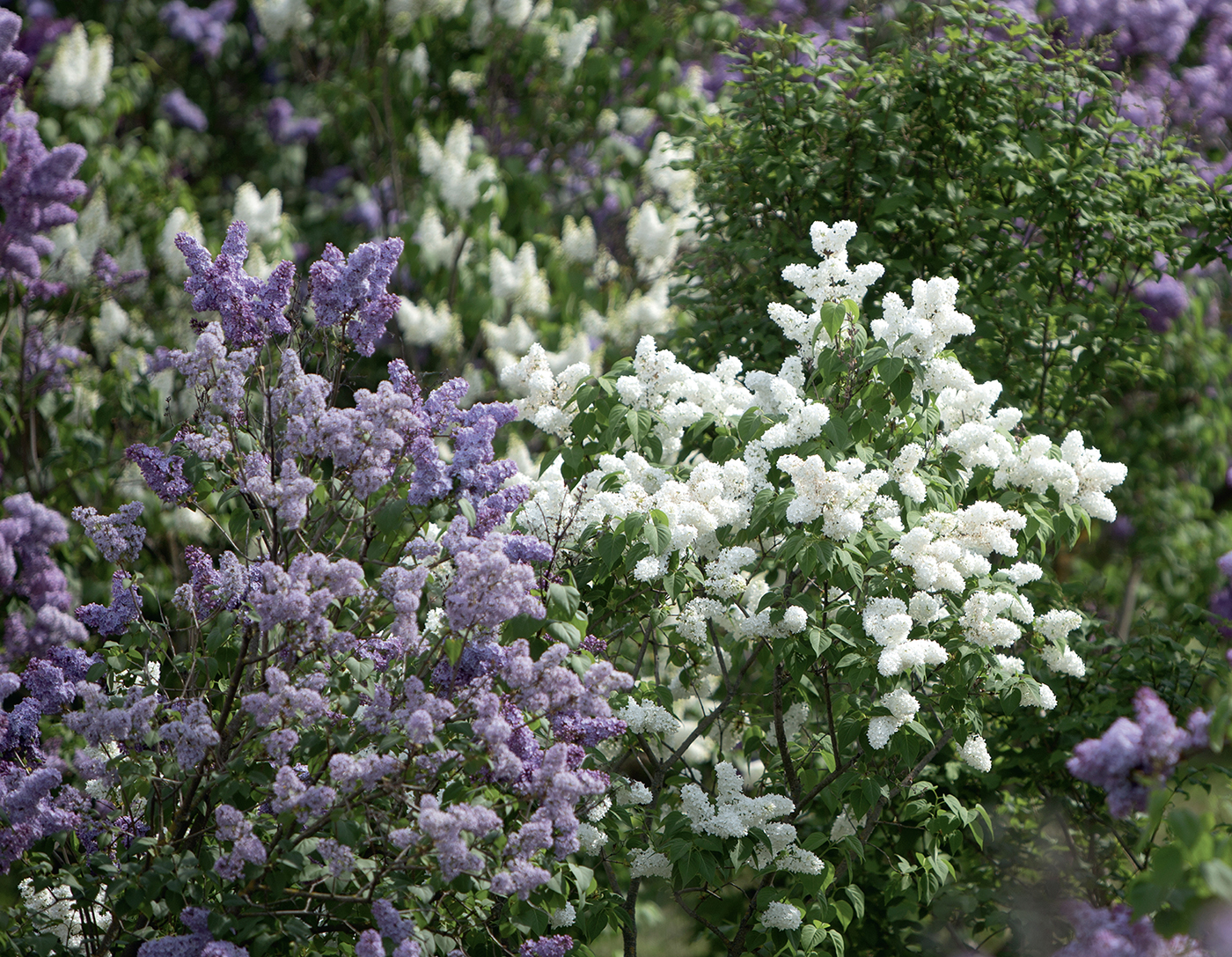Lilacs in Latvia
The lilac, with its dizzyingly enchanting fragrance, is one of the few ornamental shrubs that blooms as early as May. It has become an indispensable staple of Latvian urban landscapes and of Latvian gardens. For this reason, it's surprising to learn that this gorgeous shrub is a newcomer to our gardens, having only a 200-year-old history of cultivation in the territory of Latvia. The common lilac Syringa vulgarisis known as pliederis in Kurzeme, and beseņa or besakūka in Latgale, and over time has changed its grammatical gender from the feminine form (cerīne) to its current masculine form, ceriņš. Along with other related decorative shrubs, the lilac has become an essential and integral element of Latvian gardens.
Lilacs have been cultivated in Latvia since the second half of the 19th century.As early as 1870, Schoch's horticultural firm in Salaspils was selling lilac cultivars. By the early 20th century some of the most beautiful lilac cultivars from French plant-breeders the Lemoine nursery were availablein Latvia. In the late 19th century, the most popular cultivars in Latvia were 'Andenken an Ludwig Späth' and 'Fürst Bülow', bred by the Späth plant nursery in Germany. The 'Andenken an Ludwig Späth' cultivar has retained its significance up to the present day, even though many new lilac cultivars are available.
Dobele was one of the first places in Latvia where lilac cultivation was begun. During the second half of the 19th century, the notable pastor and ethnographer August Bielenstein created a park within the German parsonage. This park was famous for its rare plants, including lilacs. Among the cultivars from his collection is 'President Grevy', which still grows in the collection of the Institute of Horticulture.
The largest and most abundant collection of lilacs in Latvia is found here, at the Institute of Horticulture. Other large collections of lilacs can be found at the National Botanic Garden of Latvia in Salaspils, and at Kalsnava Arboretum.
The founder of the collection at the lilac garden of the Institute of Horticulture was the notable horticulturist and plant-breeder PēterisUpītis (1896–1976). The Institute of Horticulture's lilac garden collection is created based on the lilac varieties and hybrids bred by PēterisUpītis, which are complemented by varieties from other countries. The purpose of the collection is to preserve and maintain PēterisUpītis's life's work, as well as to introduce visitors to the diversity of lilacs that exist, and the work of the plant-breeders. Since its creation, the lilac garden has become a popular attraction in Dobele, attracting many visitors. The lilac garden extends over 4.5 hectares and is the home of the largest lilac collection in the Baltic countries, including approximately 240 different lilac cultivars and hybrids. The majority of the collection is composed of cultivars bred by PēterisUpītis, which are complemented by cultivars by LaimonisKārkliņš and plant-breeder cultivars from abroad.

